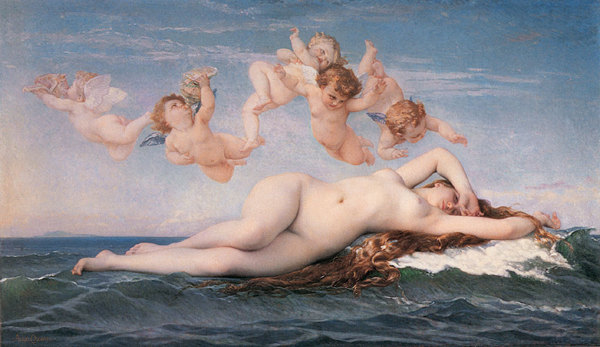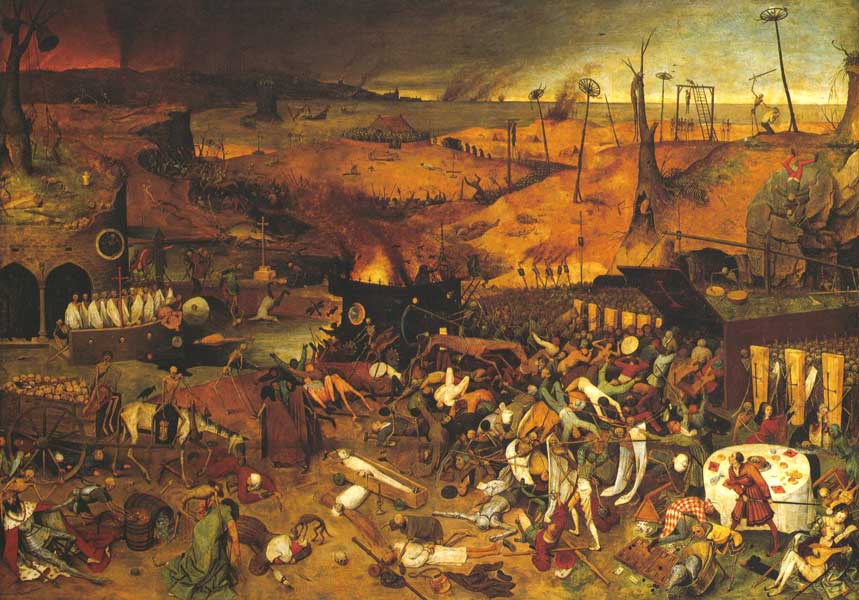Illness, whether a mental or physical debilitation, has been the subject of countless works of art throughout history. It has been pictured scientifically, religiously, sympathetically, heroically, and any number of other variations. In relation to the artistic discourse, the ways in which illness is depicted reflects historical stigmas as well as broad human emotions.  Much of what we know about responses in society to illness, like the Plague, are documented in art but it is often used to evoke an appeal, like in works by Picasso or Basquiat, to universal distress. To examine this, works concerning illness spanning several centuries will be analyzed, as well as texts related to art in illness and artists that suffer from illness themselves. In order to do this, it is important to look at these works of art comparatively, thus many works will be compared to others in their same time period and other eras. Illness is complicated through art because it can take something fairly scientific objective and turn it into a work that is subjective, propaganda, or even just reflect it back objectively.
Though art traces its roots back much farther than the Middle Ages or the Renaissance, some of the most terrifying and prolific images of illness came from these eras. An example of this would be Pieter Bruegel the Elder’s Triumph of Death. The “Triumph of Death†(or the “Dance of Deathâ€) motif was a common one, arising from medieval times with religious reinforcement. In the face of the Black Plague, this theme was given ample commissions by the Catholic Church as a memento mori, reminding the public of the pains of Hell and the rapidity that death can come in. The hysterical lust for repentance during the outbreak and spread of the Bubonic Plague reflected the religious fervor that gripped Europe, and this is partially why the Triumph of Death’s savage depiction of illness is important documentation. In Bruegel’s painting, finished circa 1562, Death is seen ravaging every social hierarchy, from peasants to emperors. Some “Triumph of Death†works from this period even went as far as to include Catholic bishops among those being cut down by Death (represented by skeletons). In relation to illness, this painting shows the intense religious reaction to a fear of sickness. Through depicting illness and death, Bruegel examines people’s frantic and desperate desire to escape the inevitable but not without religious propagation.
In the same vein as Bruegel’s piece, artists continued to use their talents to the liking of higher authorities. The subject of illness and death seemed to be a point of supreme sympathy or relatability for the masses because it continued to be the center of many works commissioned by governments or churches, possibly because of its ability to tap into the fears of every person; dying is inescapable for everyone and you’ll be lucky if you don’t suffer greatly while doing so. In the 18th Century Neoclassicism began, unlike its state commissioned predecessor Rococo, to use illness to illustrate “civic virtue†in relation to the rise of Republicanism in Paris. Themes included bodily sacrifice for the state, like in Drouais’s The Dying Athlete, David’s The Death of Socrates, or Regnault’s Liberty or Death. It was considered a great honor to die for the Revolution and those running it spent lavish amounts of money in order to propagate this ideal. Jacques Louis David even proposed parading the decomposing body of one of the Revolution’s “martyrs,†Jean Paul Marat, in the bathtub he was murdered in through the streets of Paris (though the body atrophied beyond recognition before this could be carried out). Unlike the previous religious implementations of illness into art, the Neoclassic and later Romantic usage was meant to display a choice: Republicanism or an un-honorable death, or Republicanism with a heroic death. However, both religious and Jacobin propaganda stressed
unwavering devotion. French Revolution artists would have been fools not to draw from Christian artwork though; centuries of blind Catholic following in France was a resource widely tapped into by the likes of David and Ingres. There was already the perfect model of martyrdom and illness: Jesus. Probably the most famous work to come out of the 18th Century was David’s Death of Marat, styled after countless Pietas, most famously by Michelangelo. Along with the death motif the painter made a point of displaying Marat still in his bathtub. Marat spent most of his time in that bathtub because he had a very sensitive skin condition, something that increases the perception that this was a cruel murder against a helpless victim. This shows how, among other things, illness can be manipulated and exploited in art.
Toward the middle of the 19th Century state commissioned art began to disappear. With the restoration of the Bourbon Dynasty in France, less concentration was paid to funding political art in an attempt to disassociate themselves from the still leftist and revolutionary artists prevalent at the time, like Daumier, who was imprisoned briefly for unkind caricatures of Louis Philippe in the form of a sickly, rotting pear (which also caused a nationwide ban on any depictions of pears) or Delacroix. A new form of bourgeoisie was also in place, one offended by the growing influx of peasants drawn to the city during the Industrial Revolution. With this brought unclean and unhealthy living environments, along with a fantastic rise in prostitution and an artistic desire to depict these realistically, hence Realism. Emile Zola, an ardent supporter of Impressionist Realism, remarked upon hearing outcries from the upper classes over Manet’s masterpiece Olympia “Why not be honest?â€Â Olympia, a sardonic response to Cabanel’s saccharine Birth of Venus, shows a thin, pale, and bold prostitute lacking the typical voluptuous body that was associated with beauty.  This pursuit of the real, an unglorified view of the sickness the Parisian poor were experiencing, became a fixture in Impressionism. This was done, almost to a grotesque point, by Degas in his sculpture Little Dancer of Fourteen Years 9. Called by one critic the “Flower of the Gutter,†Degas disgusted critics with his bony, often speculated as anorexic, ballerina. His original sculptures of Little Dancer of Fourteen Years was not a bronze cast as the current ones are but a wax sculpture with genuine human hair and displayed in a glass case. Unlike today, displaying a sculpture in a glass case was not common practice for artists in the 19th Century and was perceived as a reference to medical displays. This was a scandal; prior to Impressionism artists did not attempt to exhibit realistic interpretations of the lower classes. Full scale paintings were previously reserved for heroic battle scenes, aristocrats, or works of civic virtue but to devote them to the flâneur and prostitutes, and not kindly done, of Paris was an outrage. Other then class relations, Realism changed how illness was dealt with. It was no longer used as a tool to instruct or cause fear for the masses, but was instead a point of power and change in shocking the bourgeoisie.




Leave a Reply
Be the First to Comment!